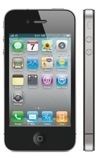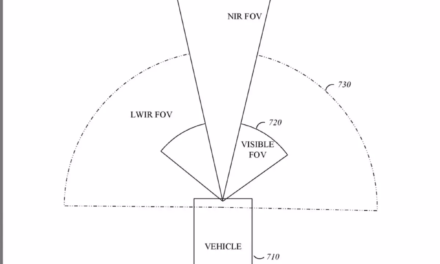Several Apple patents have appeared at the US Patent and Trademark Office. Following is a summary of each.
Patent 7,747,765 is for a method and apparatus for media data transmission. A digital processing system is provided with a time related sequence of media data provided to the digital processing system based on a set of data, wherein the set of data indicates a method to transmit the time related sequence of media data according to a transmission protocol. The set of data, itself, is a time related sequence of data associated with the time related sequence of media data. The time related sequence of media data may be presented and/or stored by the digital processing system. The inventors are Anne Jones, Jay Geagan, Kevin L. Gong, Alagu Perlyanna and David W. Singer.
Patent 7,747,784 involves a data synchronization protocol. Among other things, techniques and systems are disclosed for syncing data between a client device and a server. Synchronizing data includes initiating a sync session by negotiating a sync mode between a client device and a server for each of one or more dataclasses. A status code is generated based on a result of the negotiating. Based on the generated status code, the client device and the server exchanges one or more data items to be updated for the one or more dataclasses using the negotiated sync mode for each dataclass. The exchanged one or more data items are updated at the client device or the server The updated one or more data items are committed at the client or the server. The inventors are Brendan A. McCarthy and Carsten Guenther.
Patent 7,747,765 is for a method and apparatus for media data transmission. A digital processing system is provided with a time related sequence of media data provided to the digital processing system based on a set of data, wherein the set of data indicates a method to transmit the time related sequence of media data according to a transmission protocol. The set of data, itself, is a time related sequence of data associated with the time related sequence of media data. The time related sequence of media data may be presented and/or stored by the digital processing system. The inventors are Anne Jones, Jay Geagan, Kevin L. Gong, Alagu Perylanna and David W. Singer.
Patent 7,747,747 involves a method and arrangement for suppressing duplicate network resources. A duplicate suppression protocol is introduced in order to suppress duplicate entries from appearing in a list of available network resources. With the duplicate suppression protocol of the present invention, a computer that wishes to query for network resources also asks for duplicate suppression information from the responding network resources. The duplicate suppression information for a particular network resource specifies identifiers associated with that network resource for various protocols. Thus, if a particular network resource responds to more than one network resource request from a single requesting entity, that requesting entity will be able to locate duplicate network resource information. Thus, a single unified list of network resources available for various different protocols may be presented with all duplicate network resources removed. The inventors are Kevin Arnold and David M. O’Rourke.
Patent 7,743,496 involves cable termination methods. A termination for a multi-conductor cable is made by providing a metal structure that includes a plurality of parallel but spaced apart fingers that are joined together by a connecting member adjacent at least one end of each finger. Each of the conductors in the cable is connected to a respective one of the fingers at a location that is spaced from the connecting member. The cable and the fingers are then over-molded with an insulating material where the conductors are connected to the fingers. This over-molding leaves a portion of the length of each finger exposed. The connecting member is then severed and removed. The inventor is Christopher D. Prest.
Patent 7,746,360 is for viewing digital images on a display using a virtual loupe. A digital image may be viewed using a digital image system that employs a virtual loupe. A virtual loupe comprises a lens region and a target region. A user may position the target region over a portion of a screen, which may correspond to a digital image, to cause a depiction of visual information associated with the portion of the screen identified by target region to be displayed in the lens region. The user can configure the virtual loupe to display visual information in the lens region at different levels of magnification. The lens may automatically move and change in orientation with respect to the target region as the target region moves on the display to ensure that the display of the lens region on the display is always unobscured. The inventors are Randy Ubilios and Stan Jirman.
Patent 7,746,927 involves robust single-pass variable rate encoding. Before encoding the video sequence, the encoding manager determines the size of a buffer to use for keeping track of over/under used bits generated during encoding. The encoding manager uses the target bit rate for the video sequence and the length of the video sequence to determine the size of the buffer. After allocating bits to a frame of the sequence, the encoding manager determines the quant to use to encode that frame. The determination of a quant to use to encode a frame is informed by the fullness of the buffer. The encoding manager adjusts the quant to use (and thus the aggressiveness of its encoding) in response to the amount of overflow generated thus far by the encoding of the video sequence. The inventors are Eric Hamilton, Jian Lu, Gregory K. Wallace and Peter Chou.
Patent 7,746,032 is for a method and system for operating a portable device in a power-limited manner. The patent involves improved techniques to manage operation of a portable electronic device having a substantially depleted battery when power is available from an external, power-limited source are disclosed. In one embodiment of the invention, the substantially depleted battery can be initially charged while a power-intensive operation is delayed. Once the battery has adequate charge to assist the external, power-limited source in powering the portable electronic device, the power-intensive operation can be performed. In this manner, power consumption of a portable electronic device can be managed so that reliable operation is achieved without exceeding limits on power being drawn from an external, power-limited source. The inventors are David John Tupman and Steven Bolinger.
Also, Apple was granted patents D618,703 and D618,704 for its Mail and Trashcan icons. The inventors on both patents are Imran Chaudhri, Cesar Carrera and Patricia Coleman.





